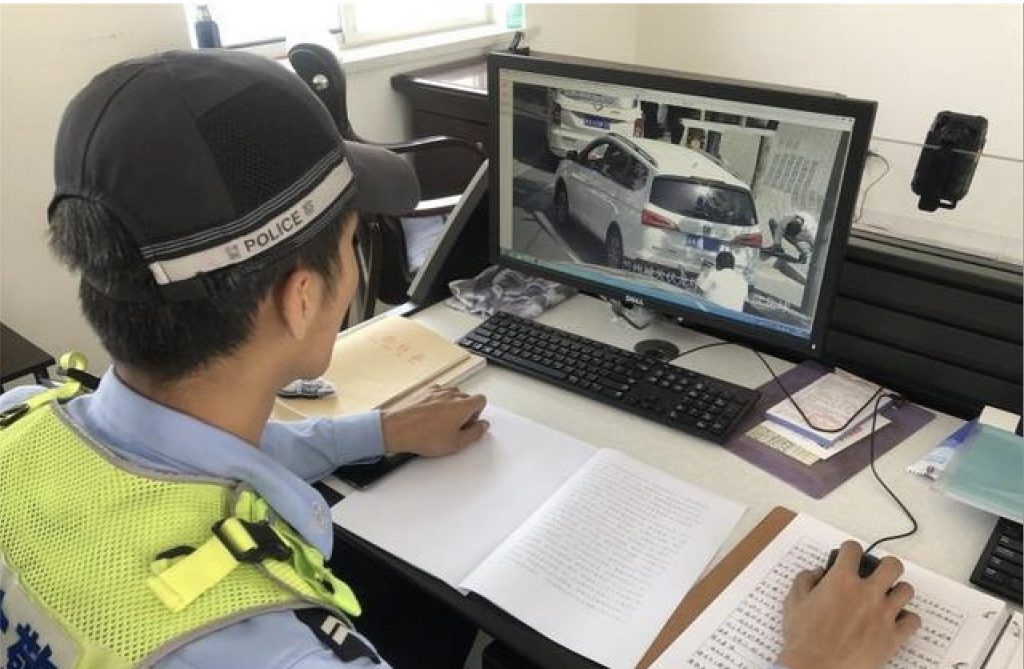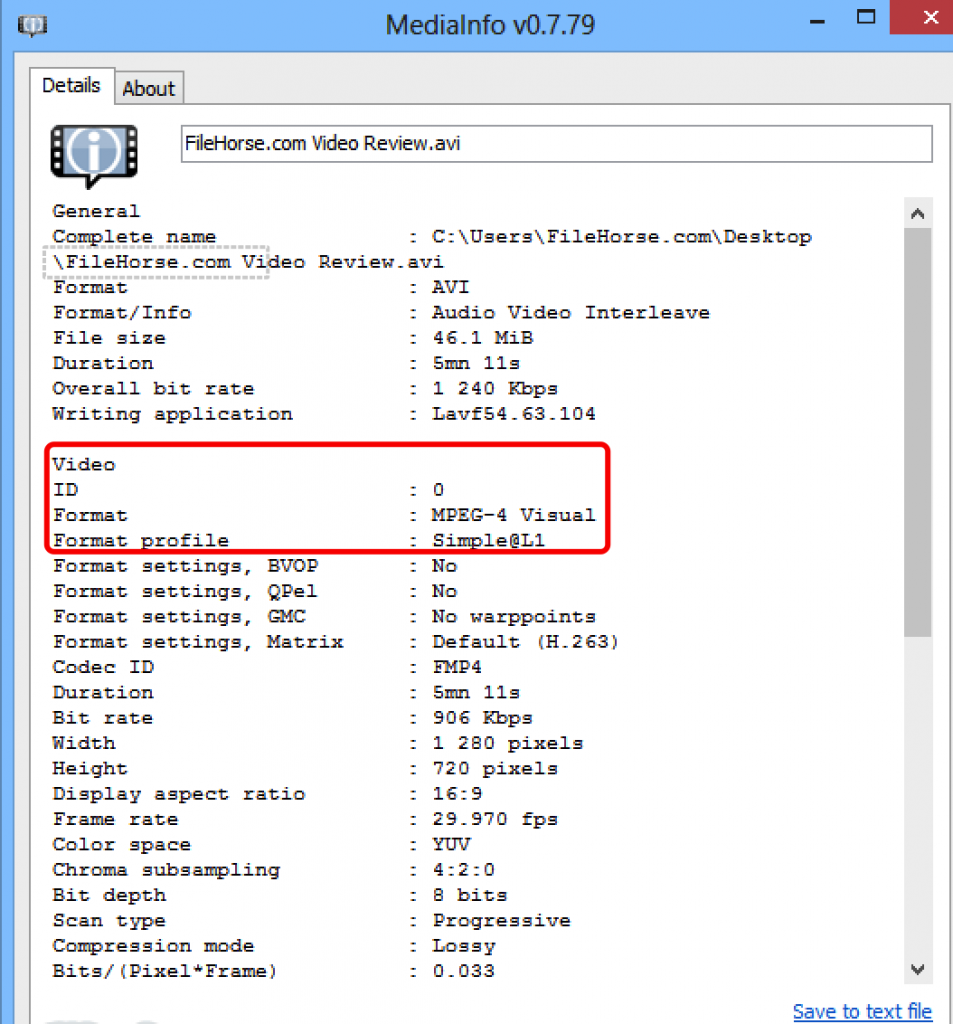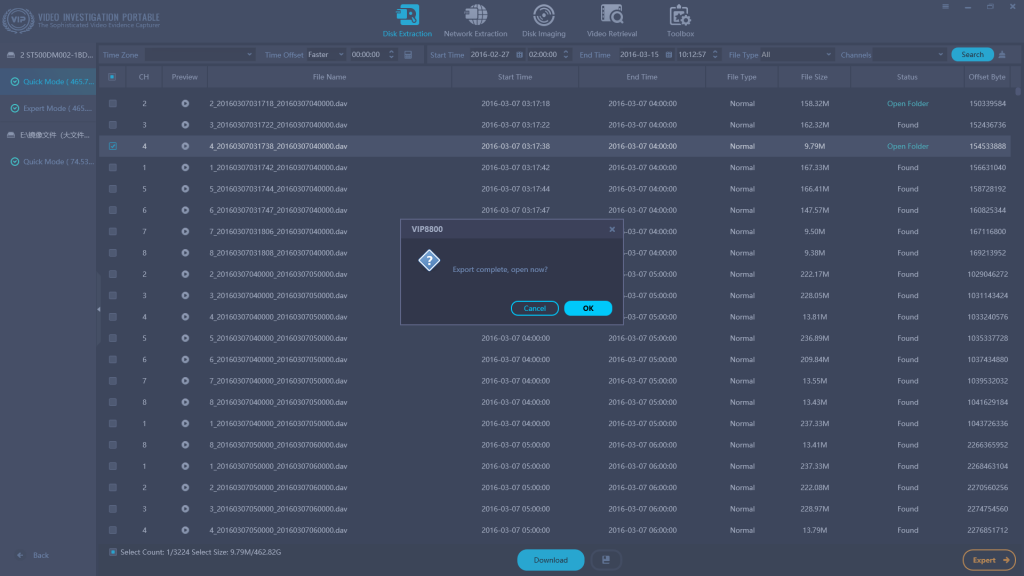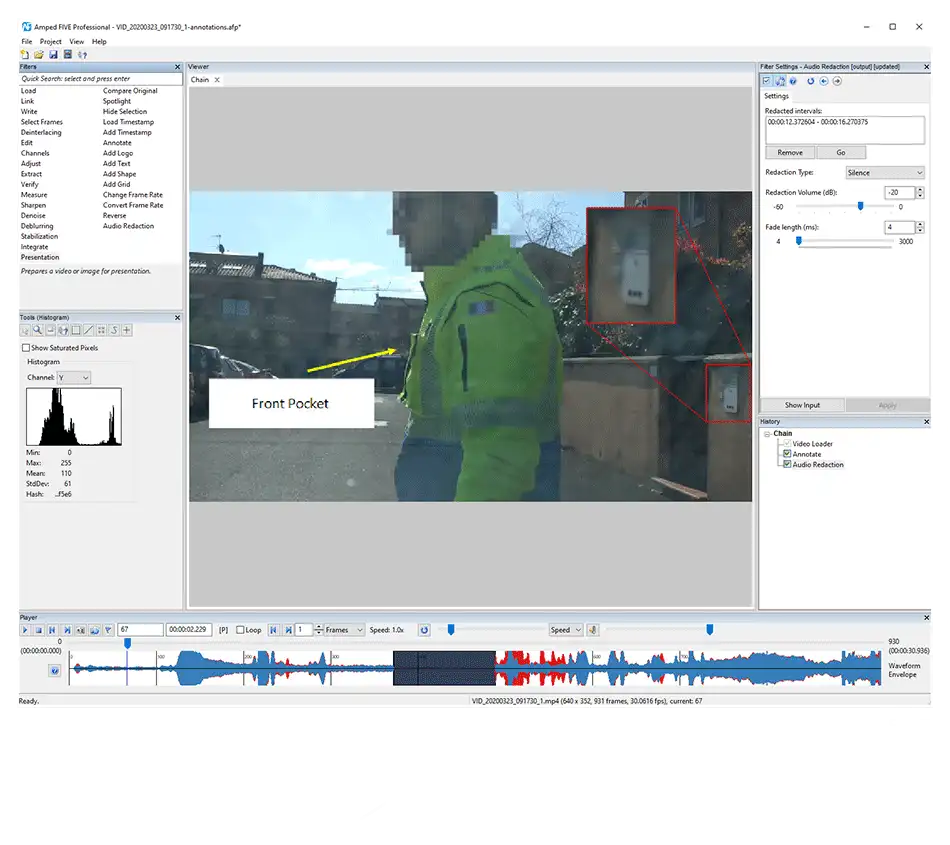What Is Video Forensics?
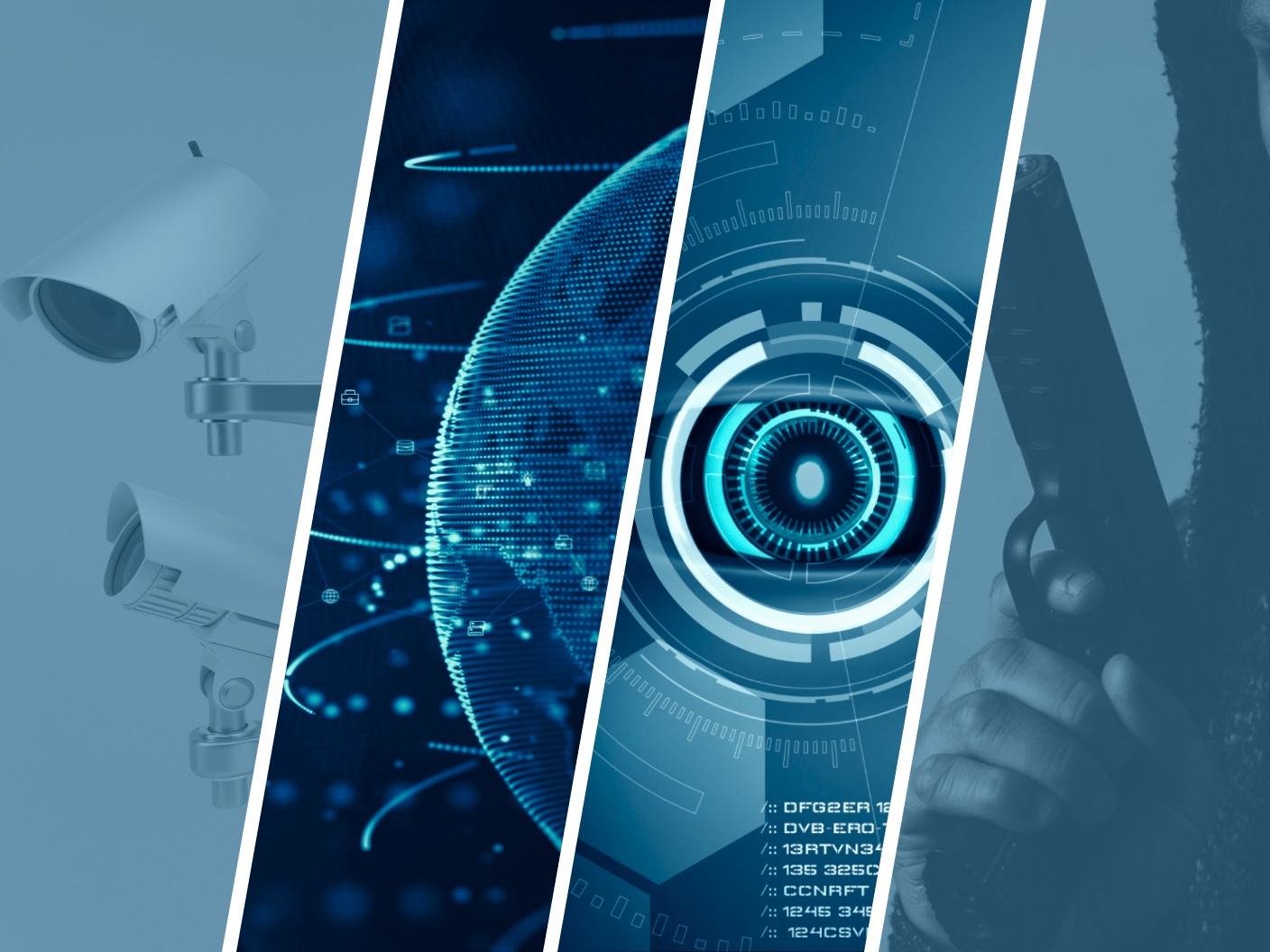
-
Content
- Background
- Forensic Video Recovery
- Forensic Video Enhancement
- Forensic Video Analysis
- Conclusion
-
Content
- Background
- Forensic Video Recovery
- Forensic Video Enhancement
- Forensic Video Analysis
- Conclusion
Background
A picture is worth a thousand words and a video is a silent witness that speaks for itself. Isn’t it? No doubt a video can be powerful evidence, but there are many factors that might affect the availability, integrity, and interpretation of their reliability, making it less effective or even misleading.
Video evidence is abundant, from CCTV to mobile and body cameras, and it is only expected to increase. But to get the most out of it, every Digital Forensic Investigators need to know the basics of video forensics.
Though you do not need to be a video forensics analyst or expert to utilize video files as evidence, you do need to know the answers to some basic questions.
- What is video forensics in general?
- What are the major steps of the video forensics process?
- How to protect the integrity of the original evidence so that it remains useful and valid in the court of law?
- When is it the time to consult a video forensics analyst?
Video forensics is the scientific examination and evaluation of video footage in legal matters. Analyzing a video was a relatively straightforward task in the days of analog video, but the spread of digital video changed everything.
To unveil the above questions in colloquial for you to easily understand, the following 3 broad categories: Forensic video recovery, forensic video enhancement, and forensic video analysis for comprehending video forensics would be the best concerns to start with.
Forensic Video Recovery
Video forensics often starts with the recovery of the video footage. Meanwhile, not only do today’s video capture devices come in a variety of shapes and sizes, but use different software, file systems, and codecs.
Though you don’t need to know all about them, you do need to know the concept behind to make sure you’ll get the most available clues out of your video evidence.
More imporantly, to make sure your evidence leads to the truth and remains valid in the court of law, let’s examine some important concepts involved in video recovery from common digital devices.
Playing a video on one device and capturing video through the camera of another device is a very poor way to collect evidence. It seriously compromises all four important factors of video integrity: shape, size, color, and timing.
- Every device able to capture video have some common components:
- A camera
- A way of sending video data to the storage
- The storage itself
- Recovery of video footage is mostly concerned with the storage part.
Video Footage Storage
Here, we will discuss some basics of storage that will help you get the evidence while keeping its integrity intact.
- For a device to store digital video on a digital medium, like a hard disk or a memory card, the device must format the storage. Formatting a digital storage medium creates a pattern of tracks and sectors known as a file system, which enables the device to store video data in the digital form of zeros and ones.
- Formatting is simple enough as long as the device in question uses a common file system like FAT, exFAT, NTFS, and HFS Plus. Most common digital devices like mobiles and digital cameras use common formats, but it is different with CCTV, DVR, and other security video capture devices.
- Many popular brands have developed their proprietary file systems, which make you unable to be connected by your PC and copied for those required videos because the operating system in your PC is unaware of that particular file system.
- Once you figure out the file system, you will be able to access the data stored on the device.
- Multiple files and some of their attributes could be shown up, but to get the most out of this data, you need to play the video files. Since we could face file systems obstacles discussed above, some files can be played on a wide range of devices without any further ado. However, many older and modern devices use obscure or proprietary video codecs and most of the video files are meaningless combined with a jumble of zeros and ones unless you acquire those codecs.
OWN SCREENSHOT: Once you install the MediaInfo tool, you can right-click on a video file and click MediaInfo to view the details of the video and audio codec.
Proceed Recovery by Video Forensics Tool
If you come across a device that uses propriety or obscure file system and codec, you need to do a lot of research to lay your hands on the video. In case you are not a forensic video analyst and for the best practice, do not experiment with the original evidence lest you render it unusable.
Using a video forensics tool like VIP 2.0 is the easiest way to recover the video from such devices.
Video forensics tools have been developed to extract and read most proprietary file systems and video codecs. However, with a very large number of file systems and codecs, even a video forensic tool might not be able to extract the video footage.
In such cases, it is advisable to reach a video forensics analyst or a digital forensics solutions provider like SalvationDATA.
Do not discard or change the original media even after extracting your required videos. When you export a video from a device, it is transcoded and loses some of the detail as well as metadata associated with the videos. If possible, it is always preferable to operate the original device as read-only and preserve the original data.
Forensic Video Enhancement
Video enhancement is the process of enhancing the video and making it more suitable for a specific application. For example, zooming in a particular area might offer insights that are not apparent in the original size.
Enhancing video evidence for digital forensic purposes, however, is more complex than just zooming.
When enhancing a video, you want to bring out the details of interest already present in the video. You need to be careful of the enhancements that might add something that was not originally there, compromise the integrity of the evidence, and might lead to the wrong conclusion.
- A video can be enhanced in many ways, and newer, more sophisticated systems are opening new possibilities of video enhancement. Zooming is a common video enhancement but zooming to a specific area does not necessarily make things clear. However, zooming combined with other enhancements might provide evidence not observable in the original video.
- In certain cases, utilizing Video Enhancement Tool like Amped which has been integrated into VIP 2.0 as well, could better analyze the video and present the most possible details in the enhancement aspects.
- Contact us to apply for a Free Trial Now!
- Dealing with shadows and reflections is another important video enhancement aspect. Adjusting color, contrast, sharpness, and related attributes are also used in combination with other enhancements to view the events as they naturally occurred.
- With the advancements in forensic video enhancement technology and the increasing use of artificial intelligence, it is possible to enhance videos even more. Though we do not recommend applying the trick from this year since recently there’s been a big debate in the USA about the use of AI for video enhancement, which results in being inadmissible for those video evidence. Avoid enhancing evidence with AI, otherwise, in several places, it may not be admissible in court.
However, more video enhancement possibilities also increase the misrepresentation possibilities, and one should be even more careful to preserve the integrity of the video while using advanced video enhancement techniques.
Following is a list of some common video enhancement possibilities.
- Enlarging and zooming for specific details
- Dealing with shadows and reflections
- Slowing down the speed to comprehend more details
- Removing noise and distortion
- Syncing multiple videos of the same incident
- Syncing multiple cameras angles to show a clear event timeline
Forensic Video Analysis
Forensic video analysis includes a detailed investigation documenting the course, reason, culprits, and weapons involved in the incident, though, It can be a simple one where you only want to identify the victims and their position or know the position of witnesses to validate their observation.
Which is known to us all is that a video can be misrepresented based on shape, size, color, and timing, and when these crucial factors are misrepresented, they can lead to the wrong conclusion.In other words, you might need to do advanced operations like video comparisons, height identification, and speed analysis for complex video analysis and even further advanced forensic video analysis.
For the better practice of forensic video analysis, there is a myriad of factors to consider while doing a forensic analysis of video evidence.
Keep in mind, It is your skill as a digital forensic investigator and your understanding of forensic video analysis that enables you to observe all factors of interest and draw correct conclusions.
Viewing the video carefully is often the first step in video analysis. Start noticing the areas of interest while viewing the video so that these areas can be investigated further.
Following are some common factors to consider and analyze.
- Looking for signs of video alteration and editing
- Measuring heights and size of the objects
- Tracking people, vehicles, and other objects over time and through multiple cameras
- Adding time counter
- Performing speed calculation
Other than analyzing the complex and fuzzy video files only by yourself, working with a professional Video Forensic tool, like VIP 2.0 could save most of your time and cost, further, bring out more potential clues you unable attention to due to the video evidence files themselves.
Contact us to apply for a Free Trial Now!
Conclusion
From Rodney King to George Floyd, video evidence has played a key role in forming a public opinion as well as reaching a verdict. One must remember, the video itself is neither weak nor strong evidence but an opportunity to notice and interpret, just like any other type of evidence. It is the abundance and objectivity of the video that makes it such an important type of evidence.
Consequently, video forensics, as such an indispensable skill, enables you to consider the strengths and limitations of the video evidence and draw the right conclusion
